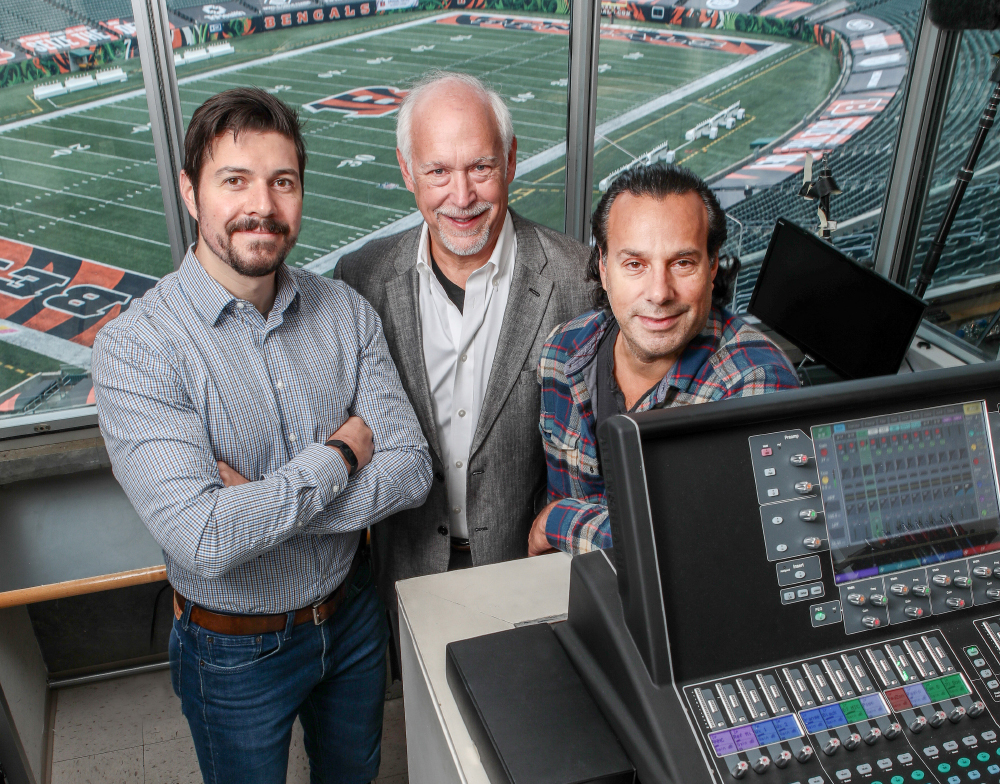
In The Driver’s Seat
Up in the control room, the biggest change is the addition of an Allen & Heath dLive S7000 mixing surface and DM64 MixRack with dual power supplies. Allen & Heath’s SuperMADI card was added for connecting the mixer with the main system audio/video router, while a GigaACE card integrates an Allen & Heath SQ5 mixer used for video production into the audio stream.
All Cat-5e connections are made using Whirlwind ENC2 cabling. At the end of its processing chain the dLive S7000 feeds into an Aphex Aural Exciter and then directly into the Q-SYS network. As a fail-safe measure, an Ashly MX-206 rack-mount mixer acts as a backup in the event the main console should fail.
Primary among the features that landed the dLive S7000 and DM64 in the PBS control room are the S7000’s 36 faders residing over six layers, 26 soft keys, and fully-assignable layout. According to Scott Simpson, executive producer of JungleVision Productions, the in-venue creative group steering entertainment technologies at the stadium, the new system’s control end adaptability hasn’t gone unappreciated. “Now we can control gate messaging right from the audio booth,” he says. “And even change to a live mic in emergency situations. We just haven’t had that kind of flexibility in the past.”

Out in the bowl and throughout the concourse levels, Simpson relates that the renewed audio system’s RCF loudspeakers differ from their predecessors in terms of balance and overall coverage. “The expanded coverage in the facility is outstanding, it’s a whole new experience for our fans,” he says. “Live stadium sound is a unique animal in that hard, reflective surfaces and wide-open spaces abound. The thought that went into this design combined with the presence of the fans in the stands to help absorb unwanted reflections brings the whole system to life. Paul Brown Stadium can now continue to classify itself as one of the truly great-sounding venues on the planet.”
Set For The Long Term
Rounding out the project, the wireless map was redrawn using four Shure analog Axient receivers (model AXT400) and a pair of Axient digital receivers (model AD4D) running in diversity mode. A pair each of Axient digital (model ADX2) and analog (model AXT200) handheld transmitters sporting KSM8 capsules provide input along with a pair of AXT100 bodypack transmitters.
As for how the stadium sounds now from Horrell’s perspective: “When we debuted the system the crowd may have been small, but it was very enthusiastic. We were all tickled to death with how it sounded. It had punch, and nothing was compressed to death. The linearity was great, and evoked emotion—a pure presence that moved and excited everyone. OK, I’m an analog guy, but that’s hard to get out of a digital product.
“It additionally has dynamics that make it one of the better systems in the NFL,” he concludes. “We could never have done this with line arrays, and given the history, this all should last another 20 years or more.”
